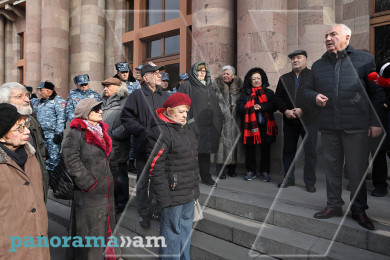
IMF forecasts slower economic growth in Armenia
The Executive Board of the International Monetary Fund (IMF) completed the fourth review under the Stand-By Arrangement (SBA) with Armenia. The completion of the review enables access to SDR 18.4 million (about US$24.12 million), bringing total access to SDR 92.0 million (about US$120.59 million). The SBA was approved by the IMF’s Board on December 12, 2022. The Armenian authorities continue to treat the arrangement as precautionary.
Armenia’s economy continues to face a positive outlook, notwithstanding the multiple shocks in recent years. Supported by strong domestic demand, real GDP growth is projected to reach about 6 percent in 2024 and moderate to about 5 percent in 2025. Over the medium-term growth is projected to decelerate to around 4.5 percent, although an acceleration of structural reforms could raise growth potential. Inflation is projected to remain below the Central Bank of Armenia’s target in the short term and rise gradually toward its target over the medium term. External and financial sector buffers remain strong.
The program is broadly on track. All quantitative performance criteria and indicative targets for end-June 2024 were met, although lower than expected inflation breached the lower-inner Monetary Policy Consultation Clause (MPCC) band. The authorities have adopted a 2025 budget with an overall fiscal deficit of 5.5 percent of GDP, in line with the program, to accommodate urgent spending needs and intend to resume fiscal consolidation in 2026. Progress on structural benchmarks (SB) continues, with two SBs implemented, one nearly completed, and two postponed to March 2025.
Following the Executive Board’s discussion today, Mr. Bo Li, Deputy Managing Director and Acting Chair, made the following statement:
“Armenia’s economic outlook is positive, with robust growth and low inflation. The program performance is strong, but sustained prudent policies and reform efforts remain critical to preserve buffers and build resilience in a still uncertain domestic and external environment.
“The 2025 budget appropriately balances preserving macroeconomic stability and addressing priority spending related to the integration of refugees and high security spending needs. Over the medium term, gradual fiscal consolidation will be critical to maintain fiscal sustainability. Planned measures include strengthening revenue mobilization, expenditure prioritization, and adoption of a medium-term expenditure framework. Progress on public financial management reforms is essential to reduce fiscal risks, especially those related to state-owned enterprises, public-private partnerships, and government guarantees.
“The monetary policy stance is appropriate, and further policy rate decisions should continue to be guided by the outlook for inflation and inflation expectations given the uncertain outlook. The CBA’s growing credibility since the adoption of inflation targeting in 2006, strengthened operational independence, and upgrades to its monetary policy framework provide scope for lowering the inflation target within a well-coordinated and communicated strategy. The flexible exchange rate has served Armenia well in absorbing external shocks, while building reserve buffers.
“The banking system remains sound. The authorities continue to carefully monitor financial sector risks, particularly those originating from the real estate market, and recalibrate prudential tools as necessary. Efforts should focus on preserving capital buffers, enhancing supervisory powers and capacities, and strengthening crisis management, including through adoption of the new bank resolution law.
“Advancing structural reforms would support sustainable and inclusive growth. Continued efforts to boost labor market participation, especially among youth, women, and vulnerable groups are important. Reforms to diversify exports, improve the business environment, strengthen governance, and advance climate policy implementation are critical to enhance economic resilience and increase potential growth.”
Newsfeed
Videos






























